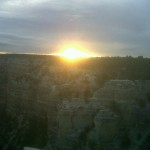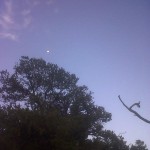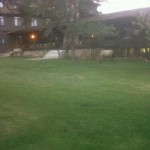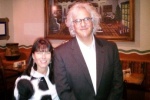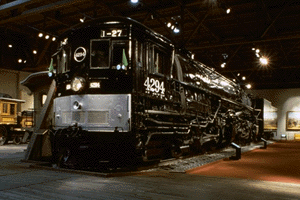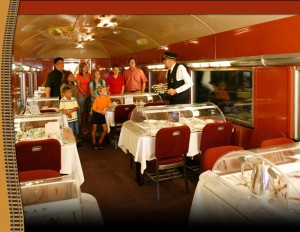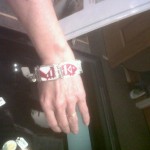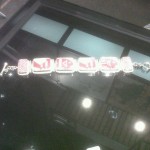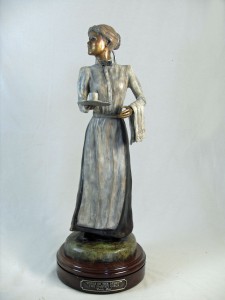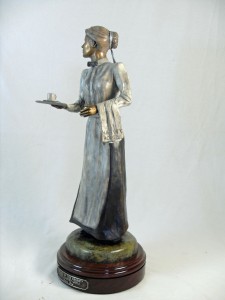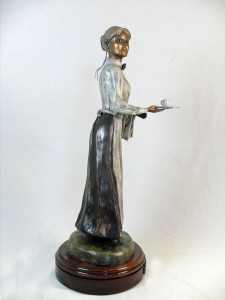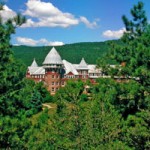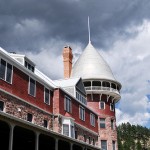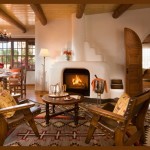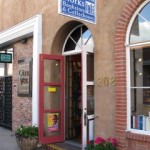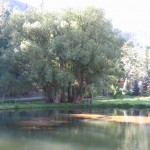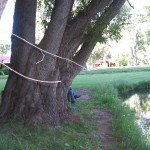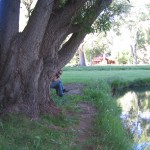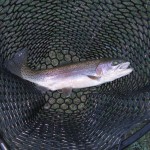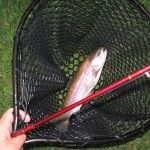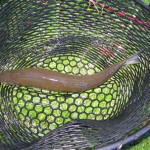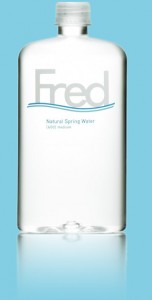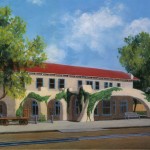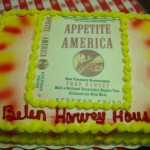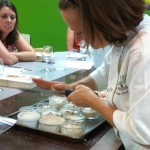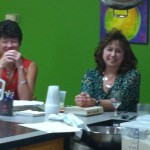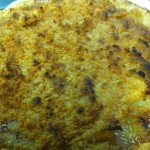Just watched the sun rise over the south rim of the Grand Canyon. It’s partly cloudy, but you see so much sky here that when you look right it’s almost completely overcast–with just a sliver open for the sun to peer through—and when you look left it’s perfectly blue skies with just a wisp of clouds and the last view of the just-past-full moon. So, when the sun finally hit the horizon, it lit up every little fault line in the cloud cover for miles for a few minutes, and then it disappeared back into the cloud bank.
The temperatures can be as dramatically disparate as the sky. It was in the 50s and really windy on the rim this morning, yet the highs at the bottom of the canyon today are predicted well into the 90s.
Basically, at the canyon, the weather forecast is—pretty much everything.
My J-school students would laugh at me that this post starts with a “weather lead”—which I always tell them not to do—but when I get out here I become my weather-obsessed father (who, every morning, discoursed on which direction the wind was blowing and what that portended). I also can’t resist taking pictures of things like the deer grazing in front of the El Tovar dining room at 5:30 am.
Anyway, we had a great visit to the Rt 66 town of Williams where, for over 100 years, people have come to take the Grand Canyon Railway to the south rim. Got a chance to visit the massive machine shop where they work on the antique rail cars used for the GC Railway–trainiac porn–and then Friday morning had a nice signing at the Grand Canyon Railway depot, where at 8 am I was greeted by an excited woman who wanted to tell all about her grandmother, who had been a Harvey Girl in Deming, NM. She said she didn’t want to buy the book until she got to the canyon, so I figured I’d never see her again, but when I got to El Tovar and started signing books in the lobby, she was one of the first in line. Not far behind her was one of the original general managers of the South Rim from the 1960s, and an amazing cross-section of people from all over the world.
This is a funny time of year at the canyon–it’s the tail-end of families visiting together before school starts, as well as the peak time for European trekkers, but the fall onslaught of hikers and retirees hasn’t yet begun in earnest. So you get a little bit of everything. One of our favorites was a couple we met on the observation platform at the back of the train. They had, just the day before, officially become empty-nesters. They dropped their last child off at college and, as the wife recounted—stiffling a smile she knew she shouldn’t have—her mother-in-law who had been living with them had finally passed. The first thing they wanted to do with their new-found freedom was see the Grand Canyon, which I can completely understand.
There are a lot of lifelong Fredheads up here, and every day new tourists learn the Harvey saga and head off to Spread the Fred far and wide. The Xanterra folks, who have now seen us twice in six months, treat us like we live here. And some days, I kinda wish we did.
Here are a couple cellphone pics from this morning All terrible—photographing things here is crazy anyway, you really need to be here (I especially love the early-morn tourists taking flash photos of the sunrise.) And my busted blackberry just makes it even worse. But you get the idea
